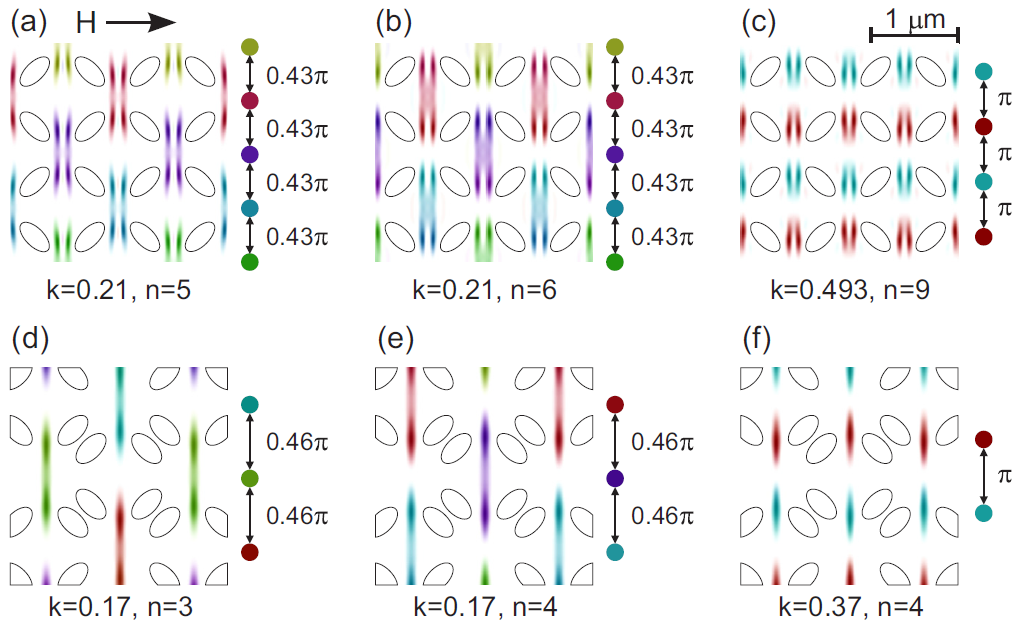S. Mamica, X. Zhou, A. Adeyeye, M. Krawczyk and G. Gubbiotti
Phys. Rev. B 98, 054405 (2018)
Reversed structures of artificial spin-ice systems, where elongated holes with elliptical shape (antidots) are arranged into a square arraywith two orthogonal sublattices, are referred to as antisquared spin ice. Using Brillouin light-scattering spectroscopy and plane-wave-method calculations, we investigate the spin-wave propagation perpendicular to the applied field direction for two 20-nm-thick Permalloy nanostructures which differ by the presence of single- and double-elliptical antidots. For the spin-wave propagation along the principal antidot lattice axis, the spectrum consists of flat bands separated by several frequency gaps which are the effect of spin-wave amplitude confinement in the regions between antidots. Contrarily, for propagation direction at 45° with respect to the antidot symmetry axis, straight and narrow channels of propagation are formed, leading to broadening of bands and closing of the magnonics gaps. Interestingly, in this case, extra magnonic band gaps occur due to the additional periodicity along this direction. The width and the position of these gaps depend on the presence of single or double antidots. In this context, we discuss possibilities for the tuning of spin-wave spectra in antisquared spin-ice structures.

Fig.1. SW profiles of the modes bounding the lowest magnonic band gaps for φ = 45◦ in (a)–(c) ASSI and (d)–(f) ACSSI structures. The bounds of the gaps are marked with red spots. Colors represent argument (phase of SW) and their intensity modulus of the dynamic magnetization, as it is shown in the inset. The change of the phase along the vertical direction within each profile is also provided on the right side of each plot. Below each profile its wave vector k (in 107 rad/m) and the mode number in the frequency spectrum n are specified.